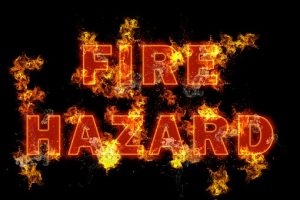Courtesy of iii.org
HOLIDAY FIRE LOSSES
On Independence Day in a typical year, far more U.S. fires are reported than on any other day, and fireworks account for two out of five of those fires, according to the National Fire Protection Association (NFPA). Fireworks caused an estimated 17,800 reported fires, including 1,200 total structure fires, 400 vehicle fires, and 16,300 outside and other fires in 2011, according to a fireworks fact sheet from the NFPA. Key stats include:
- Fireworks fires resulted in an estimated eight reported civilian deaths, 40 civilian injuries and $32 million in direct property damage.
- In 2013, U.S. hospital emergency rooms treated an estimated 11,400 people for fireworks related injuries; 55 percent of those injuries were to the extremities, and 38 percent were to the head.
- The risk of fireworks injury is highest for young people under age 4, followed by children 10 to 14.
- The National Fire Protection Association (NFPA) says Thanksgiving Day is the leading day for home cooking fires, with three times as many occurring on Thanksgiving as any other day of the year. In 2013, there were 1,550 fires on Thanksgiving, a 230 percent increase over the daily average.
Home Fires
- The National Fire Protection Association (NFPA) says Thanksgiving Day is the leading day for home cooking fires, with three times as many occurring on Thanksgiving as any other day of the year. In 2013, there were 1,550 fires on Thanksgiving, a 230 percent increase over the daily average.
- U.S. fire departments responded to an estimated annual average of 210 home structure fires that began with Christmas trees from 2009 to 2013, according to a fact sheet from the National Fire Protection Association (NFPA).
- Home Christmas tree fires caused an average of seven civilian deaths, 19 civilian injuries and $17.5 million in direct property damage annually from 2009 to 2013.
- Electrical distribution or lighting equipment was involved in 38 percent of the home Christmas tree structure fires. About one-quarter (24 percent) occurred because some type of heat source was too close to the tree. Decorative lights were involved in 18 percent of these incidents. Eight percent of home Christmas tree fires were started by candles.
- The top three days for home candle fires were Christmas, New Year’s Day and Christmas Eve, according to another NFPA fact sheet.
- During the five-year-period of 2009-2013, the NFPA estimates that decorations were the item first ignited in an estimated average of 860 reported home structure fires per year. These fires caused an estimated average of one civilian death, 41 civilian injuries and $13.4 million in direct property damage per year, according to an NFPA fact sheet.
For information about Holiday Safety and Preparedness, see our Pinterest board.
FIRE LOSSES
Great strides have been made in constructing fire-resistant buildings and improving fire-suppression techniques, both of which have reduced the incidence of fire. However, in terms of property losses, these advances have been somewhat offset by increases in the number of and value of buildings. In 2014, on average, a fire department responded to a fire every 24 seconds in the United States, according to the National Fire Protection Association. A structure fire occurs every 64 seconds; a residential structure fire occurs every 86 seconds and an outside property fire occurs every 52 seconds.
STRUCTURE FIRES
There are about a half million fires in structures each year, according to the National Fire Protection Association (NFPA). In 2014, 78 percent of structure fires were in residential properties and 22 percent were in non-residential structures, including storage facilities, stores and offices, and industrial properties, and public assembly. Public assembly fires include fires in eating and drinking places and other entertainment venues, houses of worship and other places where people congregate. There are approximately 7,600 structure fires in eating and drinking establishments each year, according to a NFPA report based on data between 2006 and 2010.
According to the NFPA, fires in nightclubs are among the most deadly public occupancy fires, because they contain a large number of people in one main space. In January, 2013 a deadly nightclub fire in Brazil claimed over 230 lives, making it one of the most deadly nightclub fires on record. The deadliest nightclub fire in world history was the 1903 Iroquois Theater fire in Chicago, Illinois in which 602 people were killed, followed by a 1942 Cocoanut Grove fire in Boston, Massachusetts which claimed 492 lives and a fire at the Conway’s Theater in Brooklyn, New York in 1876 which killed 285 people. The 2003 Station Fire in Rhode Island claimed 100 lives, and ranks as number eight. The complete top ten ranking is posted at NFPA: Nightclub Fires.
